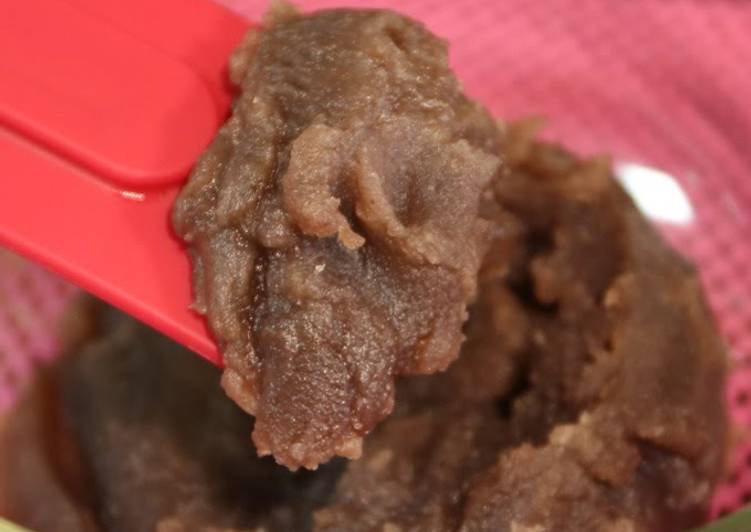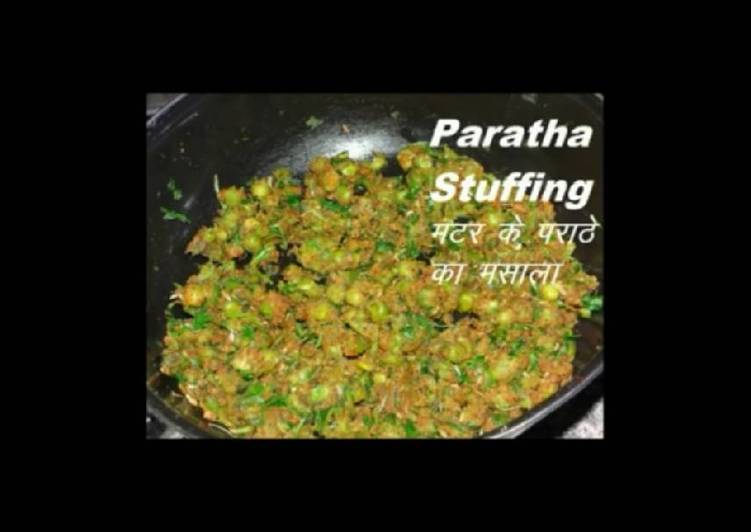
Hello everybody, hope you’re having an incredible day today. Today, I will show you a way to prepare a special dish, basic koshi-an (smooth sweet bean paste). One of my favorites food recipes. For mine, I will make it a bit tasty. This will be really delicious.
Rinse the beans in water, and remove any that float to the surface. Koshian (or koshi-an) is a kind of sweet red bean paste (Anko) used in a lot of Japanese sweets. While Tsubuan Anko is bean paste containing whole beans, Koshian is a strained and smooth paste. Koshian is used in many traditional Japanese desserts which have a more sophisticated feel.
Basic Koshi-An (Smooth Sweet Bean Paste) is one of the most favored of current trending meals on earth. It is enjoyed by millions daily. It’s simple, it’s fast, it tastes delicious. Basic Koshi-An (Smooth Sweet Bean Paste) is something that I’ve loved my whole life. They are fine and they look wonderful.
To begin with this recipe, we have to first prepare a few ingredients. You can cook basic koshi-an (smooth sweet bean paste) using 2 ingredients and 17 steps. Here is how you cook it.
The ingredients needed to make Basic Koshi-An (Smooth Sweet Bean Paste):
- Prepare 200 grams Azuki beans
- Take 200 grams Sugar
It is made from just azuki beans, sugar and a pinch of salt. The process of making it is very simple. You can not only make traditional Japanese sweets with Anko, but also spread Anko on a piece of bread just like you spread peanut butter. Sometimes known as An (餡), Anko (餡子, あんこ) is a Japanese sweet red bean paste made from azuki beans.
Steps to make Basic Koshi-An (Smooth Sweet Bean Paste):
- Rinse the beans in water, and remove any that float to the surface.
- Soak the beans in plenty of water for 8 hours (they should swell up to 3 times their original size).
- Put the beans in a small pan, add plenty of fresh water and cook over high heat.
- When it comes to a boil, drain off the water, add fresh water, and bring to a boil again over high heat.
- Repeat this process (bring to a boil, drain off the water, add fresh water) 3 times.
- Put the beans and water in a small pan and bring to a boil over high heat again. Skim off the scum once it comes to a boil.
- Turn the heat down to low, cover with a lid and simmer for an hour and 30 minutes. (Add water to the pan if it boils down too far.)
- Once the beans are tender, turn off the heat. Pour in water to reduce the temperature.
- Drain the beans. While still in the sieve, place the beans in a bowl filled with water.
- Mash the beans with a spoon or similar utensil. Discard any skins that can't be strained through the sieve.
- Next, strain the mashed beans through the sieve while sprinkling a little water over them.
- Line a sieve with a clean cheesecloth or muslin (or similar porous, unbleached clean cloth) and pour in the strained beans.
- Squeeze the anko in the cloth to drain the moisture. (This is fresh anko or "nama-an").
- Put the nama-an in a small pan. Add the sugar, and mix until it starts to turn watery.
- Simmer over low heat for 20 minutes or so while constantly stirring and kneading it with a spatula.
- Line a tray with a sheet of clean muslin or cheesecloth or a kitchen towel. Place small portions of the koshi-an on the cloth and leave to cool.
- When it has cooled down, it's done.
You can not only make traditional Japanese sweets with Anko, but also spread Anko on a piece of bread just like you spread peanut butter. Sometimes known as An (餡), Anko (餡子, あんこ) is a Japanese sweet red bean paste made from azuki beans. It is the most common filling used in many Japanese sweets. In fact, you can find sweet bean paste in many other Asian pastries and desserts. Stir beans and sugar together in a saucepan over medium-high heat.
So that is going to wrap this up for this exceptional food basic koshi-an (smooth sweet bean paste) recipe. Thank you very much for reading. I’m sure that you will make this at home. There’s gonna be more interesting food at home recipes coming up. Remember to bookmark this page in your browser, and share it to your family, colleague and friends. Thanks again for reading. Go on get cooking!

